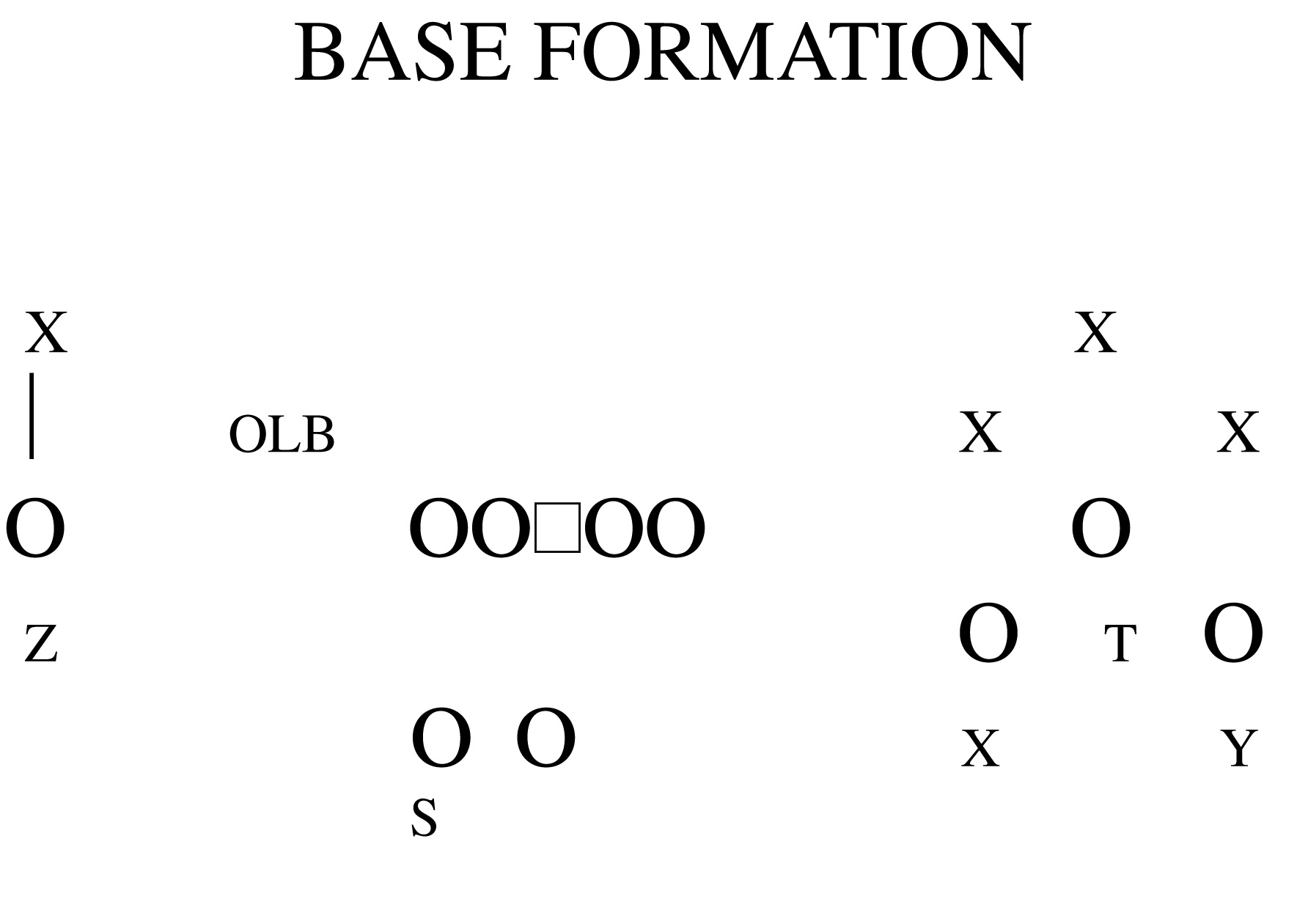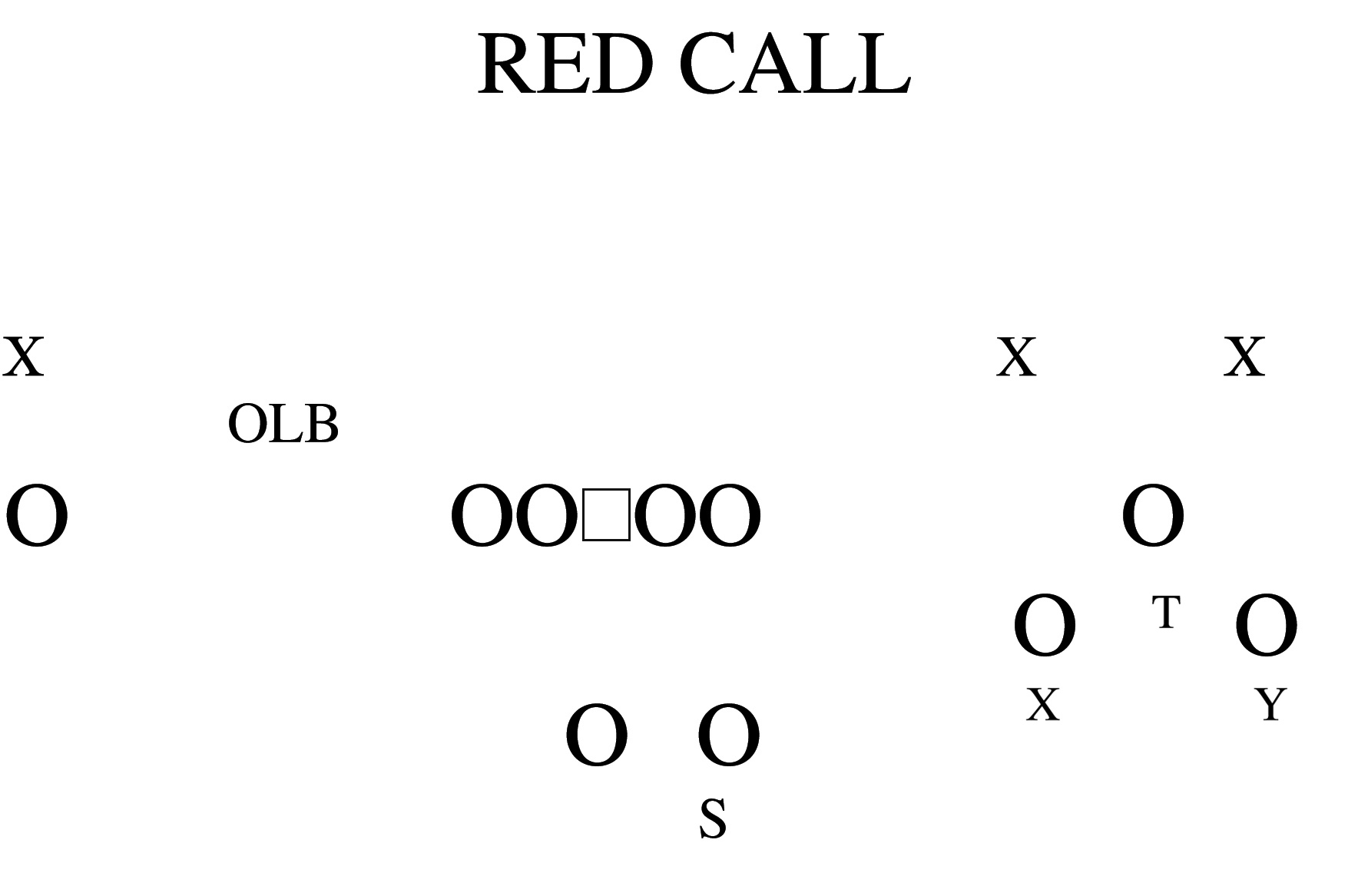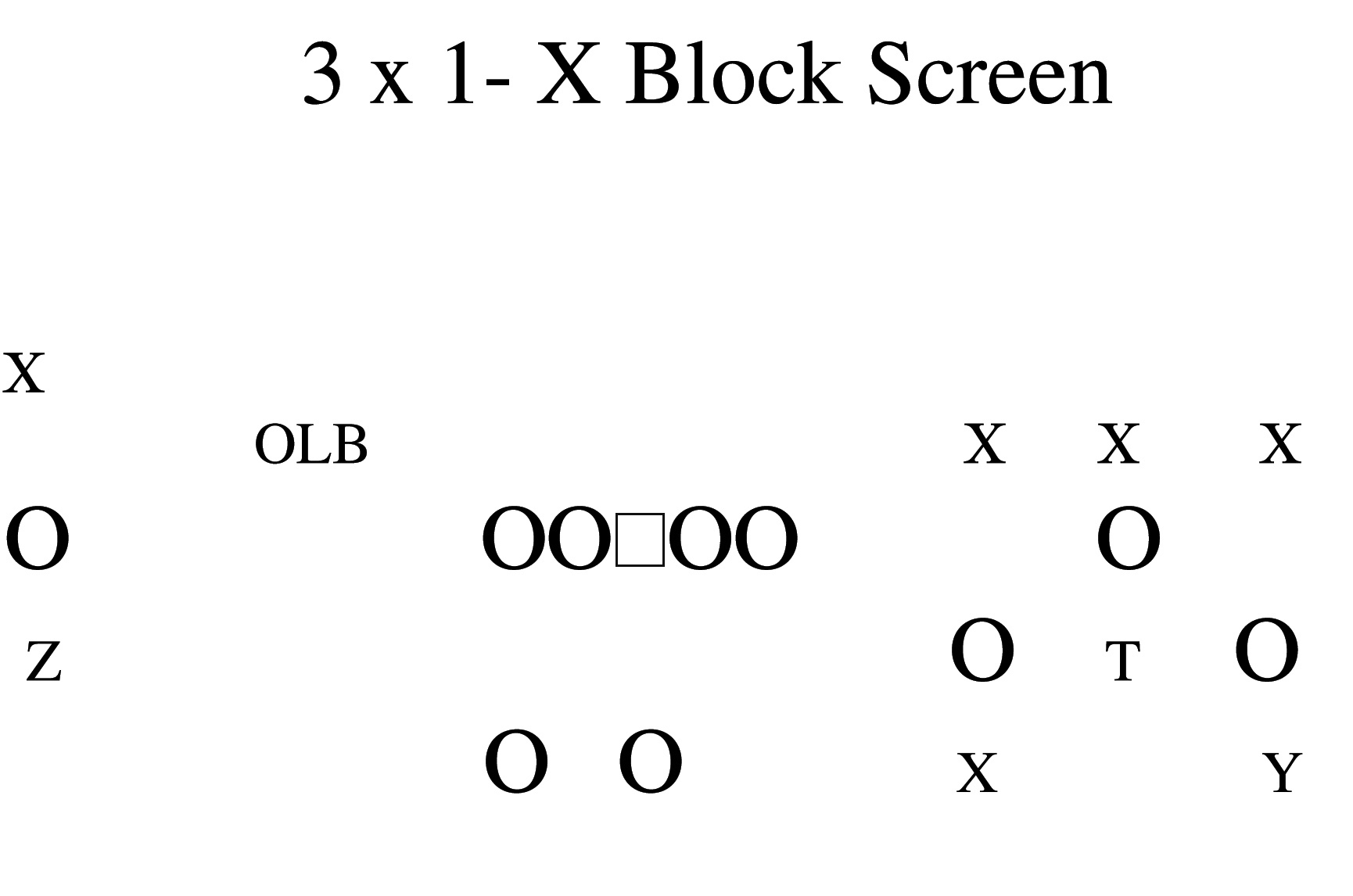by Doug Heslip
The trips formation has multiple combinations of plays that can give a defensive coordinator coverage nightmares.
The 3 x 1 formation is an offensive set that puts your best athletes in a position to use their explosive movements in space. The quick slant on the single receiver side puts the defensive back on an island. The defensive back will be asked to tackle a receiver in open space.
The three-wide receiver side has endless combinations. An offensive coordinator can run highly effective screens, flop calls, and running plays that use motion to put your offense in high gear and destroy any defensive scheme.
To become a precision-timed passing attack, your quarterback and wide receivers will have to put in endless repetitions. Timing is critical. The shotgun snap must ignite the play. The snap has to be crisp and accurate to the quarterback. If the snap is low, high, or off to the side, the timing of the quick passing game will be compromised. Once the quarterback receives the snap, he must find the laces of the ball while making his read downfield. Once a decision is made, the quarterback must fire the ball with laser-like accuracy.
MAKING IT WORK
I have my quarterback and wide receivers throw and run routes on air. This will give them an understanding of why timing is paramount. Depending on your age level, this may take weeks to perfect. I then add a defensive back and work on different scenarios the DB may use such as using an inside shade to take away the slant. When I detect that my quarterback and wide receiver have confidence in beating a defensive back, I add an entire defensive unit. I will review possible scenarios the defensive unit will try to create (See base formation – Diagram 1).

Diagram 1: Base Formation
To execute the quick slant, the first thing the wide receiver has to do is come out of his stance like a rocket. This will cause the defensive back to backpedal thinking the wide receiver is going deep. On the third step of the slant, the receiver “sticks” his route. A stick move is a pressure step by the right or left foot depending on what side of the field the receiver is on. This pressure step will give your receiver an explosive base to accelerate into the slant.
I watch the cornerback closely, because he will start to jump the slant in an attempt to intercept the pass. Once I see this, I call for the slug-go route. This means the wide receiver will accelerate into his slant via the pressure step. He will then take three more steps and stick his route again and break vertically upfield. The quarterback pump fakes after the first stick move. The defensive back usually bites on the slant as the wide receiver accelerates upfield. The defensive back is now out of position from jumping the slant so he will never recover as the receiver should score an easy touchdown.
THREE- RECEIVER SIDE
All wide receivers must explode out of their stances. The three-receiver side starts with the X receiver, who is lined up five yards from the tackle and offset approximately four yards off of the line of scrimmage. The X receiver runs a nine route which we tag as the Home Run Shot. The X will also help occupy one of the safeties in cover two. I am hoping the safety nearest the single receiver side will cheat over to defend against the Home Run Shot.
The T receiver will line up on the line of scrimmage five yards away from the X receiver. The T receiver will run a 12-yard corner route. The T receiver will be the least likely to receive the ball.
The Y receiver will line up five yards from the T receiver and off the line of scrimmage approximately four yards back. The X and Y should line up directly across from each other. The Y receiver will run a four-yard drag route. The four yards is reached after crossing the line of scrimmage. The Y will use a speed cut break into his route and run underneath the linebackers. This route is usually wide open. Lately, I have been using an explosive receiver to run the drag because no one accounts for him on the defensive side until the ball is caught.
I will also use a flop call. This tells the Z and X receivers to flop positions. I like the Z and X to have similar body types. A flop call is typically used in the second half after adjustments are made by the opponent.

Diagram 2: 3 X 1 Block Screen
I will also run a screen from the three-receiver side (See Diagram 2). I target the Y receiver and use the X as a blocker. The Y receiver will take three steps forward and then retrace his steps backwards. The quarterback will throw the ball to the Y receiver. The X receiver will abandon the Home Run Shot and block the cornerback assigned to the Y receiver. The T receiver will block his cover down. This means the defender over the X receiver has a lot of ground to cover to tackle the Y that just caught the ball.
KEYS
When the quarterback breaks the huddle, he immediately looks to locate how many safeties there are. If there is one safety in the middle of the field, I do not worry about him to the one-receiver side. In this case, the quarterback would locate the outside linebacker. If the linebacker drops to cover the slant, the quarterback hits the running back running a swing route to the one-receiver side. If the outside linebacker runs to the swing route, the quarterback will throw to the slant.
If the quarterback notices that the defense has only two defenders covering the three-wide receivers, the quarterback adjusts the running back to the three- receiver side by yelling ‘Red.’ A Red call tells the receivers on the three-receiver side to abandon their routes and block the defender in front of them (See Diagram 3). We now have a numbers advantage to the three-receiver side. The quarterback throws to the running back who is running a swing route to the three-receiver side. We now have four against two.

Diagram 3: Red Call
We will also try to sneak the running back to the tight end position on the three- receiver side. This means the T receiver has to move off of the line of scrimmage slightly to make the running back eligible. Everything looks the same except there is no running back next to the quarterback. The running back will run straight down the field and look for the ball just past linebacker depth. If the defense is in cover two, the running back splits the two safeties. I am hoping the safety nearest the three receiver side will commit to the T receiver who is running the 12-yard corner.
OFF-SEASON THROWING
To perfect the quick passing game I feel you need to start throwing in January. This means getting your QB, wide receivers and your center together to work on the timing from snap to throw to catch. Your quarterback needs to set aside additional time to perfect his footwork.
As for the wide receivers, the hardest thing to get into their heads is to explode like a rocket off of the line of scrimmage. They must, without exception, be drilled constantly to explode from their stance. Your receivers must run precise routes that will enable them to defeat one-on-one battles with the defensive backs that are covering them.
Your center must, without exception, be a part of the off-season passing routine. The center must understand he is vital to ignite the play and the timing begins with him.
The off-season is an excellent time to practice different scenarios such as the two- minute offense, blitz reads, sight adjustment routes, and last play of the game routes. This high octane passing game cannot be implemented in August. The efficiency and accuracy of this precision timed passing attack will not yield touchdowns as it would if tuned up properly during the off-season.
About the Author: Doug Heslip is a Team USA Canton, OH assistant football coach and former Head Coach at Gwinn High School (MI). He has 15 years of coaching experience and is the founder of the ‘Hitch It and Rip It’ football camps. Heslip also serves as a member of the Congressional Youth Advisory Board.
Sign Up for the Play of the Week Newsletter

POWER PLAY (GAP SCHEME)3 Drills to Improve Your Passing GamePackaging Plays Part III Packaging Three Concepts TogetherPackaging Plays Part II Packaging Basic Run Plays with Short Passes and ScreensThe Double Gun System A Unique Combination of the Double Wing and Shotgun Formations

Maintain a Power Run Game From Spread FormationsThe Quick Passing Game – A ‘Check With Me’ System Made EasyThe Pistol-Flex Triple Option – Introduction and Philosophy


| Home | Magazine | Back Issues | Shopping | Subscribe | Contact Girdiron Strategies PO Box 14041 North Palm Beach, FL 33408 p. 561-355-5068 Copyright 2020, Gridiron Strategies a division of AFM Media, LLC. All Rights Reserved. |